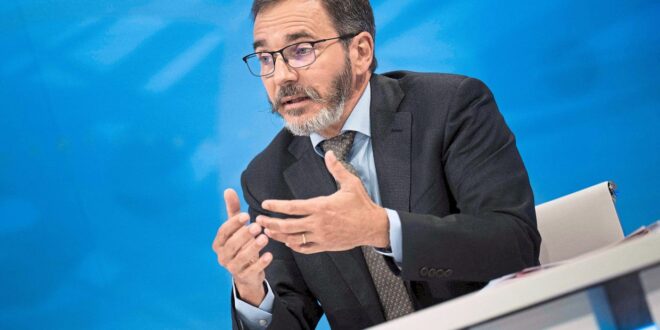SYDNEY: The four-year synchronisation among developed-world central banks might be about to weaken as domestic drivers take over from global trends in determining price outlooks.
A pioneer of inflation targeting in the early 1990s, New Zealand has a knack of setting trends in monetary policy. And it may do so again by snapping the policy uniformity, with traders pricing the possibility of an interest rate hike that ANZ Bank economists said could come as soon as Feb 28.
There’s potential for the convergence trend to crack elsewhere too.
In the United States, proof that inflation remains sticky and the labour market sound has convinced traders to embrace the Federal Reserve’s (Fed) push-back against market bets on near-term easing.
In the eurozone, which avoided a recession last year only by the slimmest of margins, price pressures are retreating faster than expected, backing arguments of those pushing for earlier cuts.
Traders are piling into bets the Swiss National Bank will cut interest rates as early as next month. And the United Kingdom is still suffering from the worst of both worlds, a downturn in the economy and high inflation, probably leaving the Bank of England (BoE) in the toughest spot.
The International Monetary Fund’s (IMF) latest round of forecasts highlights the divergence – an improved US outlook, worse prospects for the eurozone and miserable figures for the United Kingdom.
JPMorgan strategists advise clients to play the US-Europe growth divide by preferring US equities, credit and the US dollar as well as bunds, according to a note dated Feb 12.
They also expect both the Bank of Canada and Reserve Bank of Australia (RBA) to remain more hawkish than global peers.
Underscoring the different policy path, RBA governor Michele Bullock wrong-footed markets anticipating a dovish tone at the board’s first meeting of the year on Feb 6.
She said: “A further increase in interest rates cannot be ruled out.”
Meantime Japan, long an outlier in its multi-decade quest to defeat deflation, may diverge the other way with its first interest-rate hike since 2007 in coming months.
A year from now, bond traders expect benchmark rates will be about 100 basis points lower in the United States, around 120 points lower in Europe but just 40 points below today’s level in Australia and roughly 30 points higher in Japan.
Strategists at Citigroup Inc said traders need to hedge the risk of a very brief Fed easing cycle followed by rate increases shortly thereafter.
That’s a scenario European Central Bank (ECB) officials are trying to avoid, concerned that a quick U-turn could be seen as them underestimating inflation all over again.
Policymakers have spent much time discussing the risks of acting too soon and being surprised by resurgent price pressures or waiting longer and potentially damping demand too much – with the latter position currently garnering more support.
IMF chief economist Pierre-Olivier Gourinchas said central banks should avoid premature easing that would undo hard-earned credibility gains and lead to a rebound in inflation, but also not delay cuts too much, jeopardising growth and risking inflation falling below target.
“My sense is that the United States, where inflation appears more demand-driven, needs to focus on risks in the first category, while the eurozone, where the surge in energy prices has played a disproportionate role, needs to manage more the second risk,” he wrote in a recent note.
“In both cases, staying on the path towards a soft landing may not be easy.”
Minutes of the Fed and ECB’s January meetings to be released tomorrow and Thursday will be scrutinised for the latest insights on policy direction and pace.
A shift in inflation drivers is making an accurate analysis of existing trends complicated for all.
Price pressures are increasingly driven by services, with wages having a larger impact than in manufacturing.
Such local pressures are by definition more idiosyncratic, meaning central banks will need to react to them in their own ways.
In the January US inflation report, for instance, gains were fuelled by increases in the prices for food, car insurance and medical care, while shelter costs contributed to more than two-thirds of the overall increase. — Bloomberg
 BeritaKini.biz Berita Viral Terkini di Malaysia
BeritaKini.biz Berita Viral Terkini di Malaysia





